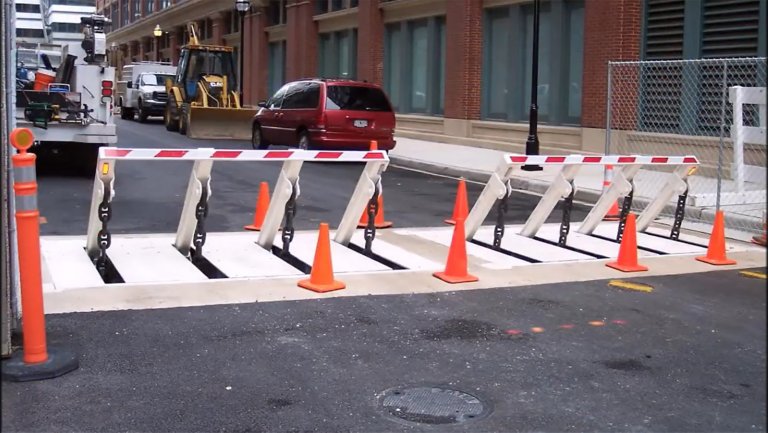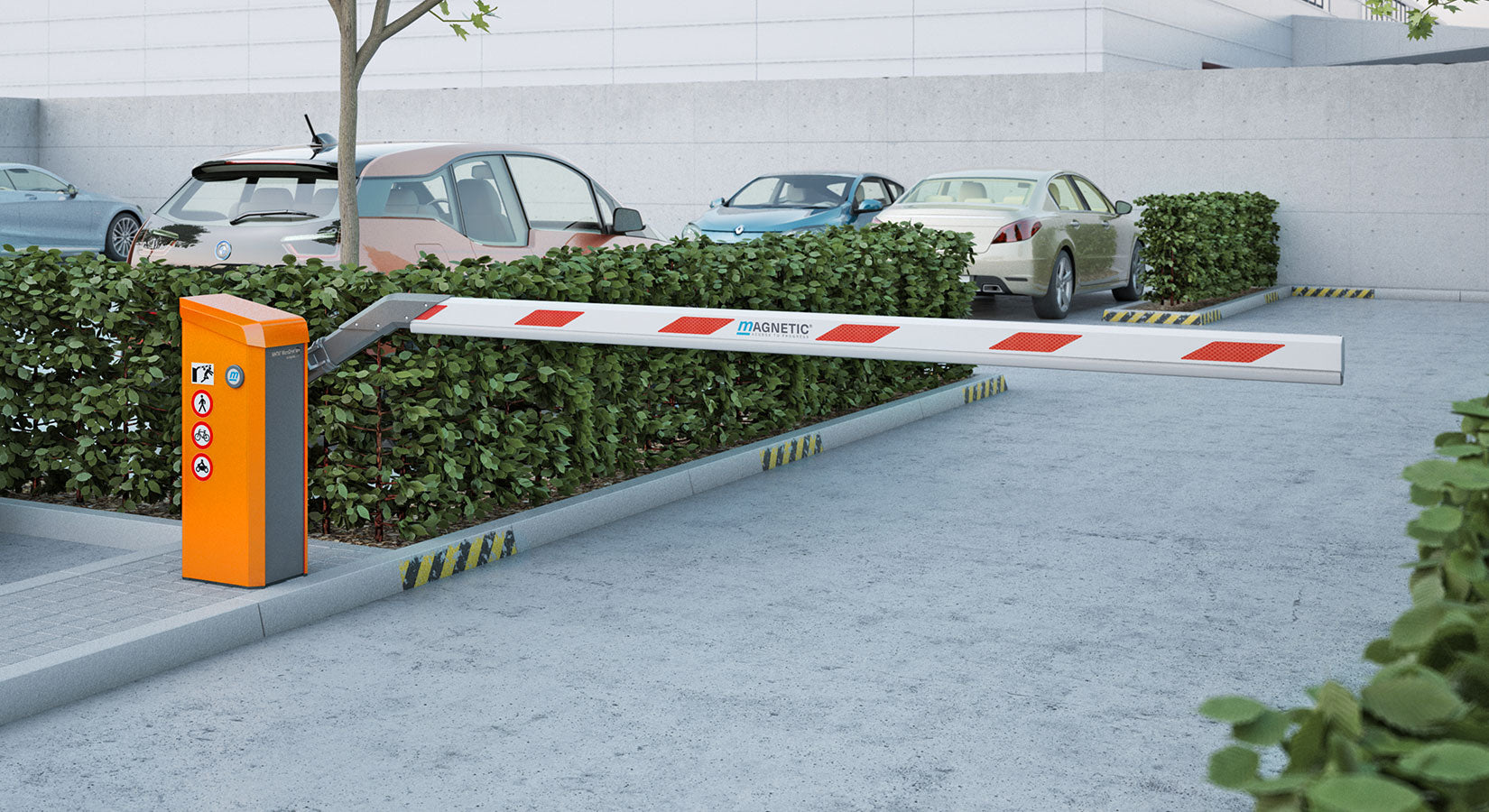Some Known Details About Wedge Barriers
Table of ContentsThe 8-Minute Rule for Wedge BarriersThe smart Trick of Wedge Barriers That Nobody is Discussing


18 may be done faster, quickly, and cost effectively. FIG. In specific embodiments, the support 30 might be a steel framework consisting of plates, beam of lights(e. g., I-beams ), and/or other frameworks that are safeguarded within the structure 14, which might be concrete. At the surface 12, a top side 28 of the support 30 might go to least partly exposed
, thus enabling the attachment of the obstacle 10 to the anchor 30. g., threaded openings)in one or more beams or plates of the anchor 30 may be subjected to the surface 12. In this way, bolts 32 or other mechanical bolts might be used to protect the barrier 10 to the support 30. As the barrier 10 is mounted to the surface 12 of the structure 14, collection of debris and other product underneath the barrier may be minimized, and components of the bather 10 may not be subjected to below grade settings. As shown by reference character 52, the training device 50 consists of parts got rid of below the wedge plate 16. As an example, the components 52 beneath the wedge plate 16 may include an electromechanical actuator, a cam, several web cam surface areas, etc. In addition, the lifting device 50 includes a spring setting up 54
The spring pole 58 is paired to a web cam(e. g., cam 80 displayed in FIG. 4) of the lifting mechanism 50. The springs 60 disposed regarding the springtime pole 58 are kept in compression by spring supports 62, including a taken care of spring assistance 64. That is, the fixed springtime support 64 is taken care of relative to the structure 14 and the remainder of the bather 10.
Wedge Barriers - Questions
g., spring support 65 )might be repaired to completion of the spring pole 58 to make it possible for compression of the springtimes 60. As the springtimes 60 are compressed in between the springtime supports 62, the spring assembly 54 creates a pressure acting on the camera combined to the springtime rod 58 in a direction 66. The continuing to be force applied to
the cam web cam deploy the wedge plate 16 may be provided given an electromechanical actuator 84 or other actuator. The springtime setting up 54 and the actuator 84(e. g., electromechanical actuator)might operate with each other to translate the cam and raise the wedge plate 16.
As mentioned over, the spring setting up 54 exerts a continuous force on the webcam, while the electromechanical actuator might be regulated to put in a variable force on resource the camera, consequently enabling the training and lowering( i. e., deploying and pulling back )of the wedge plate 16. In certain personifications, the constant force used by the springtime assembly 54 may be flexible. g., electromechanical actuator) is disabled. As will certainly be valued, the spring assembly 54 might be covered and shielded from debris or various other aspects by a cover plate(e. g., cover plate 68 received FIG. 4) that might be significantly flush with the elevated surface area 38 of the structure 14. As mentioned above, in the released setting, the wedge plate 16 offers to block gain access to or travel beyond the obstacle 10. The obstacle 10(e. g., the wedge plate 16 )might obstruct pedestrians or cars from accessing a residential or commercial property or pathway. As talked about above, the obstacle 10 is affixed to the anchor 30 secured within the foundation 14,

front braces 71. As a result, the affiliation settings up 72 may pivot and revolve to make it possible for the collapse and expansion of the affiliation settings up 72 during retraction and deployment of the bather 10. The affiliation settings up 72 cause movement of the wedge plate 16 to be limited. As an example, if an automobile is taking a trip towards the released wedge plate 16(e. For instance, in one condition, the safety and security legs 86 might be prolonged throughoutmaintenance of the obstacle 10. When the security legs 86 are released, the safety and security legs 86 support the weight of the wedge plate 16 versus the surface area 12. Therefore, the lifting mechanism 50 might be shut off, serviced, eliminated, changed, and so forth. FIG. 5 is partial perspective sight of an embodiment of the surface-mounted wedge-style obstacle 10, illustrating the webcam 80 and the camera surface areas 82 of the training system 50. Particularly, 2 camera surfaces 82, which are described as reduced camera surface areas 83, are positioned below the web cam 80. The reduced camera surface areas 83 may be taken care of to the surface 12 (e. For instance, the lower webcam surfaces 83 and the installing plate 85 may create a solitary item that is protected to the support 30 by bolts or various other mechanical bolts. Furthermore, two cam surfaces 82, which are described as top cam surface areas 87, are positioned above the webcam 80 and paired to (e. In various other embodiments, interfering layers or plates may be positioned between the surface area 12 and the reduced webcam surfaces 83 and/or the wedge plate 16 and the upper cam surfaces 87 As stated over, the cam
80 converts along the webcam surface areas 82 visit homepage when the wedge plate 16 is lifted from the withdrawed placement to the deployed placement. Additionally, as mentioned above, visit this site right here the spring assembly 54 (see FIG. 3 )might supply a pressure acting on the cam 80 in the direction 102 by means of spring rod 58, which might minimize the pressure the electromechanical actuator 84 is required to put on the webcam 80 in order to activate and raise the wedge plate 16. 1 )to the deployed placement(see FIG. 4). As revealed, the web cam 80 consists of track wheels 104(e. g., rollers), which call and convert along the camera surface areas 82 throughout procedure.